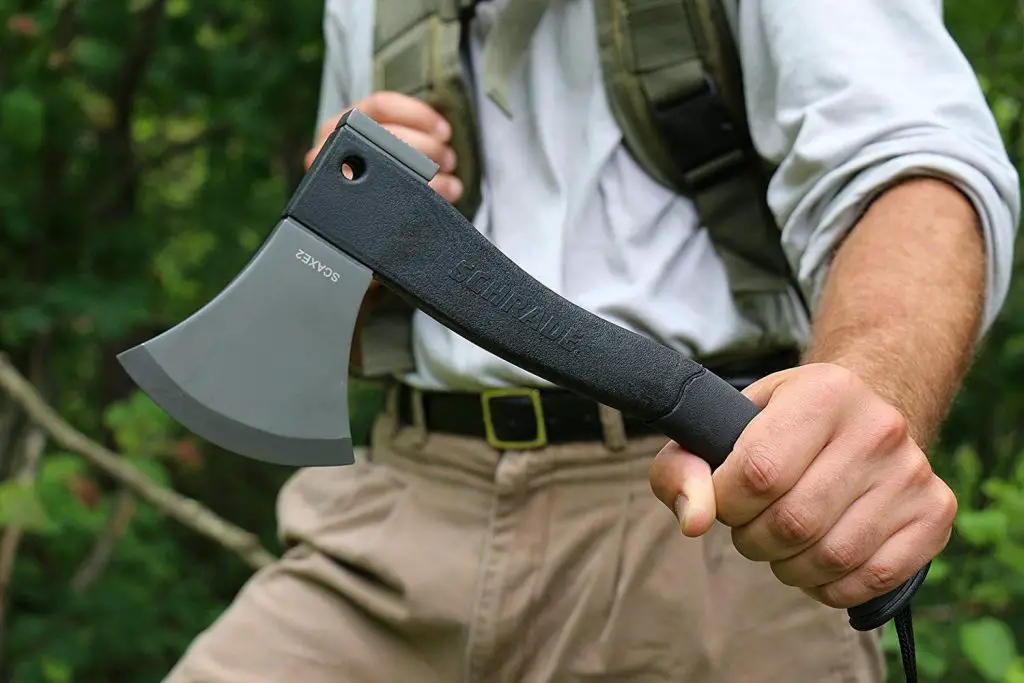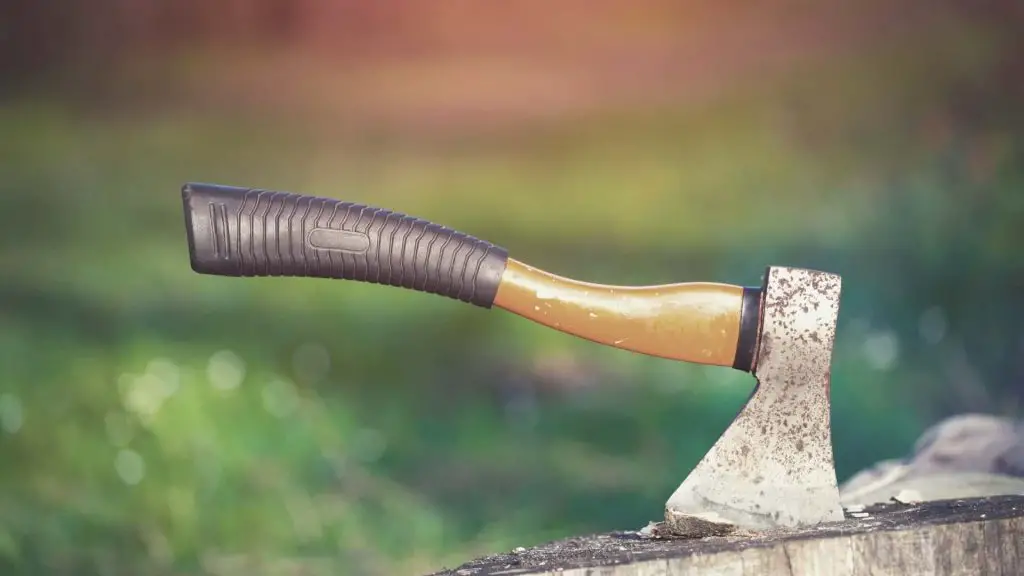One of the most interesting parts about a backpacking trip is the planning; thinking ahead of all the things you’ll do, all the places you’ll visit, and of course, making a list of all the things you’ll carry with you.
More often than not, what we initially planned will change depending on various circumstances; you might end avoiding the rain altogether, so you won’t need that large umbrella that took up a good portion of your backpack space; you might not need as many snacks, but you’ll certainly need to properly stock up on food, water, and necessities.
With this in mind, how do you know what to bring on your backpacking trip, especially if these items are big, clunky, and bulky?
Do you need a hatchet for backpacking?

In short words, you do need a hatchet, but you might need to invest a bit of extra cash in an adequate model. Regardless of the nature of your backpacking route (and the environment, obviously), a hatchet is always useful.
However, there are so many hatchet types and models, and not every single one will be that ‘valuable’ for your trip in particular.
Today we’re going to talk about why do you actually need a hatchet and about the things that you should keep in mind when buying one.
Why should you bring a hatchet on your backpacking trip?
Simply put, a hatchet is a ‘bladed’ tool that can substitute for a number of other types of tools. Due to its steelhead, it can be used as a hammer; when held by top of the handle with one hand and by the ‘eye’, it can be used for precise cutting; when held by the grip, it can be used for chopping.
Last, but certainly not least, it can also prove to be very useful for self-defense in case of an emergency.
You can never be absolutely certain what you’ll stumble on while you set off on your backpacking trip, even if you’ve frequented that route for a number of years.
Of course, favoring one path (or a set of paths) and getting familiar with the environment will give you a clear picture of what you can expect, but it’s better to be prepared just in case.
A log might fall and block your way; leaves and roots might make one trail slightly less traversable than the last time you’ve been there; your other tools might malfunction or break, and these are just some of the common scenarios backpackers are typically faced with.
As one of the most versatile tools available to man, a hatchet is always handy.
What makes a good hatchet for backpacking?

Just like we’ve mentioned a while ago, there are numerous models of hatchets, and you’ll have to choose a hatchet wisely.
If it’s too big, it might take up too much of your backpack space; then again, even if your backpack has a holster (or straps) where you could attach your hatchet, if it’s too heavy it will definitely slow you down.
Take the following parameters into account when purchasing your backpacking hatchet:
Size and weight
The reason why we’ve pooled size and weight together is that they mutually affect each other while being the most impactful factors at the same time.
You shouldn’t bother yourself with what an average hatchet’s length is (or what’s the average weight); what should interest you the most is your own physical condition in terms of endurance, strength, and stamina, as well as the size and features of your backpacking gear.
Experienced hikers and trekkers typically carry slightly heavier gear as they are accustomed to it; on another hand, if you’re new to backpacking and haven’t been running, jogging or exercising for years, you should probably sport a smaller, lighter hatchet.
Head type and design
The first thing you need to know about a hatchet’s head is that bigger is not necessarily better. Slimmer heads can penetrate rough surfaces easily, but they’re usually lighter and will require a bit more effort for hacking chores.
A hatchet with a big head is typically a bit more balanced, but if the head is excessively big, it will be slightly less useful for cutting.
Some of the best hatchets on the market feature a slim, weighted head. The reason why this is the best-rounded design is that it doesn’t compromise the cutting power for the balance and vice versa.
Handle
You’ll need a reliable hatchet while you’re out in the wilds, which means that you’ll either need to invest a bit of extra cash in a more durable wooden handle or settle for a slightly heavier metal one.
There’s also the middle-ground option – the handles made of ‘fiberglass’. They are stronger than wooden models and lighter than metal ones.
Frequently Asked Questions

Are hatchets effective for chopping wood?
In theory, you can use a pocket knife to chop a tree down, although it might take you years to do so. A hatchet is ideally used to chop smaller logs or to hack through dense vegetation, although you’ll need quite a bit of time to chop an actual tree with it.
Are there any alternatives for hatchets for backpacking trips?
Most people usually bring a hatchet, a saw, or both. These tools are relatively similar in terms of sheer sharpness, and they’re also used for similar purposes, but the method by which they are used is largely different.
Backpackers sometimes prefer the use of saws because they can ‘split the workload’ more easily; a hatchet is slightly easier to use for menial chores around the campfire.
Are hatchets ready to use as soon as I buy one?
No, hatchets require manual sharpening before they can actually be used. Due to obvious reasons, hatchets in shops are typically dull, but that doesn’t mean that they’re of poor quality.
You will need to hand-sharpen your hatchet for at least several hours before the head becomes sharp enough to cut.
Leave a Reply